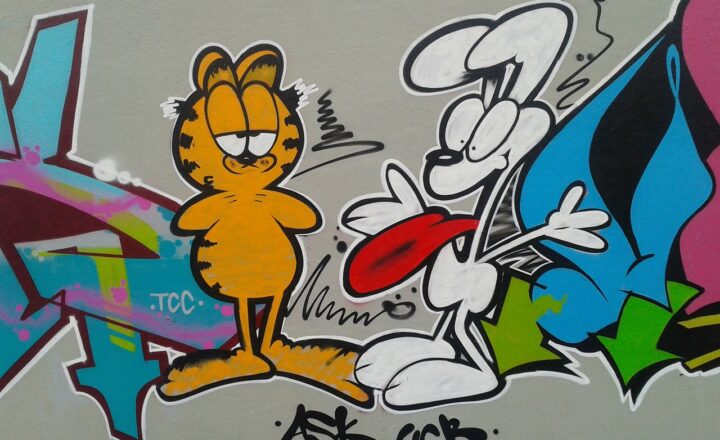The Pioneering Cartoons That Changed Animation Forever
November 18, 2024

Animation has come a long way since its inception, evolving from simple sketches to intricate 3D renderings that captivate audiences worldwide. At the heart of this evolution are pioneering cartoons that not only entertained but also transformed the landscape of animated storytelling. In this article, we will dive deep into the groundbreaking cartoons that laid the foundation for modern animation, examining their innovations, cultural impact, and the legacy they left behind.
1. The Birth of Animation: Early Experiments
Before we discuss the game-changing cartoons, it’s essential to recognize the early experiments that paved the way for animation. The late 19th century saw inventors like Émile Reynaud and Thomas Edison test the waters of animated film. Reynaud created the “Praxinoscope” in 1877, which used a series of images to create the illusion of motion. These early forms of animation set the groundwork for what was to come.
One of the first true animated films was “Gertie the Dinosaur” (1914) by Winsor McCay. Gertie was not only a captivating character but also interacted with McCay on screen, showcasing the potential for personality and storytelling in animation. This work established McCay as a visionary who could blend humor and emotion with animation.
2. Steamboat Willie: The Dawn of Mickey Mouse
No discussion of pioneering cartoons can overlook “Steamboat Willie” (1928) by Walt Disney. This short film marked the official debut of Mickey Mouse and was groundbreaking for several reasons:
- Sound Integration: “Steamboat Willie” was one of the first synchronized sound cartoons, blending audio and visual elements in a way that mesmerized audiences. This innovation changed the expectations of animated storytelling, setting a new standard for future animations.
- Character Development: Mickey Mouse became an icon due to his charming personality and relatability, laying the groundwork for character-driven animation. This change signified the importance of character in animation narratives.
- Widespread Popularity: The success of “Steamboat Willie” catapulted Walt Disney into the spotlight, leading to more innovative works and the creation of the Disney empire. It opened doors for numerous cartoons in the coming years.
This groundbreaking short not only revolutionized animated storytelling but also established Disney as a powerhouse in the animation industry.
3. Textures and Depth: The Adventures of Popeye
Another pivotal series in the history of animation is “Popeye the Sailor” (1933). Created by Elzie Crisler Segar, the Popeye character introduced an entirely new approach to animation:
- Character Complexity: Popeye was an everyman with relatable struggles and aspirations, humanizing cartoon characters in a way that resonated with audiences. He often relied on spinach to overcome challenges, which became a cultural symbol for strength.
- Innovative Animation Techniques: The series employed techniques like limited animation, which allowed for cost-effective production while maintaining quality. This approach spread through the industry, influencing countless animations to follow.
- Cultural Impact: Beyond entertainment, Popeye promoted themes of healthy eating and morality, impacting social consciousness in America during its airing.
The success and style of the “Popeye” cartoons played a crucial role in shaping character-driven animation, inspiring future genres and series.
4. The Golden Age: Looney Tunes
During the 1940s and 1950s, the animation landscape was dominated by the Looney Tunes franchise. Characters like Bugs Bunny, Daffy Duck, and Porky Pig became cultural icons, and their cartoons showcased:
- Quick Wit and Humor: The cartoons delivered fast-paced comedy, focusing on clever dialogue, slapstick humor, and creative storytelling. With witty one-liners and situational comedy, they were innovative in their use of humor in animation.
- Cinematographic Techniques: Looney Tunes directors utilized advanced cinematographic techniques, creating dynamic sequences with creative angles and perspectives that enhanced the viewing experience.
- Cultural References: The cartoons often referenced popular culture, politics, and social issues, making them relevant and relatable to audiences of all ages.
Looney Tunes not only transformed animation into a serious art form but also shaped the future of animated storytelling through their complex narratives and lasting humor.
5. The Rise of Fantasy: Disney’s Snow White
Disney’s “Snow White and the Seven Dwarfs” (1937) was the first-ever feature-length animated film and had a significant impact on animation as a whole. Its key features included:
- Feature-Length Storytelling: Setting the precedent for future animated films, “Snow White” showcased that animation could tell complex, feature-length stories, indicating the potential for animation beyond short films.
- Technical Marvels: The film utilized innovative techniques such as multiplane cameras and intricate art backgrounds, elevating the visual spectacle of animated films.
- Emotional Relatability: With character-driven narratives, Disney emphasized emotion in storytelling, leading to the development of deeper connections between characters and audiences, a trend seen in animation today.
“Snow White” demonstrated the artistic potential of animation, opening doors for feature-length films in the years that followed, leading to the creation of beloved classics such as “Cinderella” and “Sleeping Beauty.”
6. The Avant-Garde: The Fleischer Studios
Fleischer Studios played a significant role in animation with works such as “Betty Boop” and “Popeye.” Their innovative approaches included:
- Synchronized Music and Themes: Fleischer cartoons often incorporated popular music and rhythm, elevating the artistic experience and influencing future animations that needed to consider soundtracks in their creative process.
- Stylistic Techniques: Fleischer employed outlandish styles and surrealism—sometimes using rotoscope techniques—that set them apart from traditional animations.
- Character Authenticity: Characters like Betty Boop exemplified femininity and empowerment, showcasing a strong and independent female lead, which was both progressive and engaging for viewers.
These innovations paved the way for more experimental animation and empowered future creators to embrace unpredictability and creativity in animation.
Conclusion: A Journey Through Animation’s Transformation
From the early experiments of Winsor McCay to the feature-length films from Disney, each of these pioneering cartoons has had a lasting impact on the animation industry. They established storytelling conventions, introduced sonic and visual innovations, and even discussed social issues. Together, these cartoons not only entertained but also inspired generations of animators and audiences alike, shaping the future of animated content in a rapidly evolving media landscape.
Animation will continue to evolve, but the pioneering cartoons that changed animation forever will always hold a beloved place in our hearts and an essential spot in the history of film.








